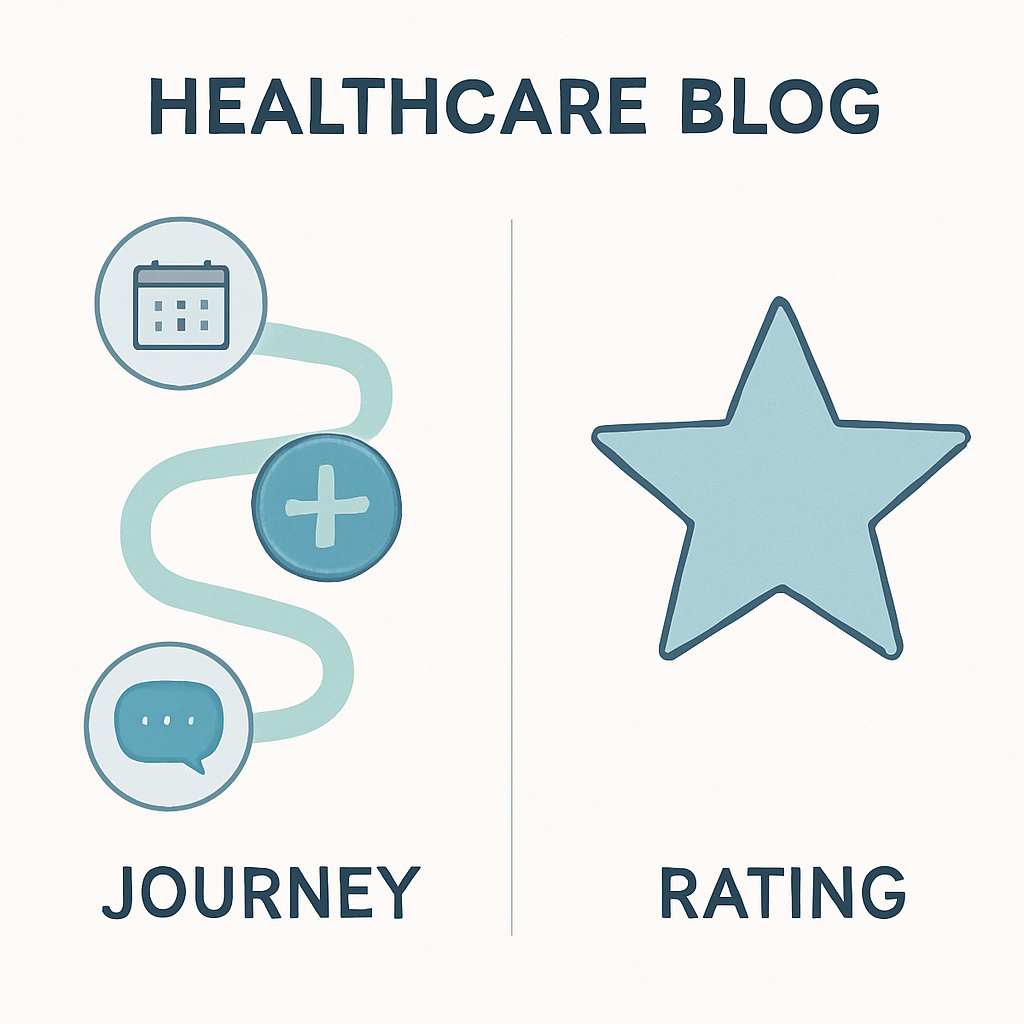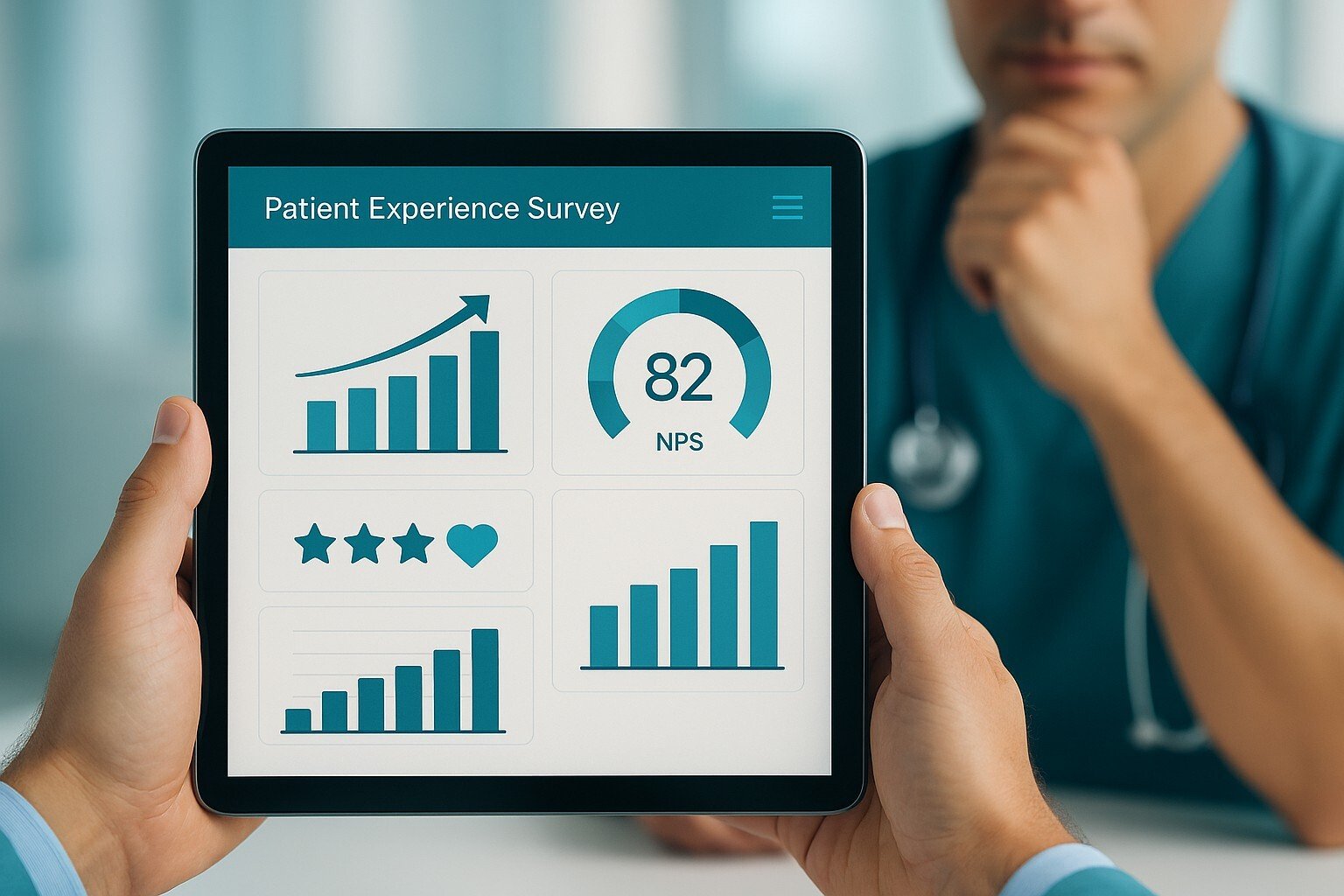55+ Patient Satisfaction Survey Questions, Templates and Strategies
A patient satisfaction survey is a critical tool that provides a direct line of communication between healthcare providers and the people they serve....
8 min read
Alvin Amoroso : 7/28/25 6:42 PM

In the complex world of healthcare, the terms "patient experience" and "patient satisfaction" are often used as if they mean the same thing. However, the debate over patient experience vs patient satisfaction highlights a critical distinction that the most successful modern healthcare organizations understand intimately. While patient satisfaction measures a patient's subjective feelings about their care, patient experience encompasses the objective reality of every single interaction they have throughout their entire healthcare journey. Understanding this difference is not just an exercise in semantics; it's a fundamental shift in strategy that can lead to improved clinical outcomes, greater financial stability, and true, lasting patient loyalty.
This comprehensive guide will break down the crucial differences between these two concepts. We will explore what sets them apart, analyze how each is measured, and provide actionable strategies to help your organization move beyond simply satisfying patients to creating a truly exceptional patient experience.
Before diving into the key differences, it's essential to establish a firm understanding of each term individually. They represent two different ways of looking at a patient's journey, and this core difference in perspective—patient satisfaction vs patient experience—informs everything from data collection to process improvement.
Patient satisfaction is a subjective metric that measures how well a healthcare encounter met a patient's expectations. It's an emotional response. If a patient expected a short wait time and was seen quickly, they might report high satisfaction, regardless of the clinical quality of the visit.
Think of it as a transactional evaluation. It answers the question: "Were you happy with what you got?"
The problem with relying solely on satisfaction is that expectations are highly variable. A patient with very low expectations could be satisfied with objectively poor care, while a patient with high expectations might be dissatisfied with excellent care. This makes it a fuzzy, and often unreliable, metric for driving meaningful improvement.
Patient experience is a far broader and more objective concept. The Agency for Healthcare Research and quality (AHRQ) defines it as the sum of all interactions, shaped by an organization's culture, that influence patient perceptions across the continuum of care.
In simpler terms, it's the totality of what actually happened to a patient. It is not about their feelings, but about the events themselves. It answers the question: "Did these specific things happen during your care?"
The patient experience provides concrete data about systemic processes, making it a powerful tool for identifying specific areas for improvement.
Now that we have a foundational understanding, let's dissect the critical distinctions in the patient experience vs patient satisfaction discussion.
The most significant difference lies in their scope. Patient satisfaction is often a snapshot, a feeling tied to a specific appointment or interaction. Patient experience, conversely, is a feature-length film. It begins the moment a person thinks about seeking care—when they visit your website or call to make an appointment—and continues through their treatment, billing, and follow-up care. It recognizes that every touchpoint, from the digital to the physical, contributes to the patient's overall journey.
This is the core of the patient satisfaction vs patient experience divide. Experience is rooted in objective reality. Did the provider explain the side effects of a new medication? Yes or no. Was the waiting room clean? Yes or no. These are reportable facts.
Satisfaction is rooted in subjective feelings. Was the patient happy with the provider's explanation? Were they pleased with the cleanliness of the waiting room? Two patients can undergo the exact same objective experience but report vastly different levels of satisfaction based on their personal expectations, mood, or prior experiences.
This difference in perspective leads directly to different measurement methodologies.
Because patient experience data is objective and specific, it is highly actionable. If data shows that many patients report they "never" received clear information about their post-discharge care, a hospital has a clear mandate: fix the discharge process. They can implement new protocols, create better educational materials, or conduct follow-up calls.
Satisfaction data is often too vague. A report showing "low patient satisfaction with provider communication" doesn't explain why. Was the provider rushed? Did they use confusing medical jargon? Were they not empathetic? Without knowing the "what," it's nearly impossible to implement an effective "how" to fix it.
A focus on patient experience is inherently proactive. It involves designing systems, training staff, and cultivating a culture that ensures positive interactions happen consistently. It's about building a framework for excellence before the patient even walks in the door.
A focus on patient satisfaction is often reactive. Surveys are sent out after a visit, and organizations react to the scores. It’s a retrospective look that tries to fix problems after they’ve already occurred, rather than preventing them in the first place.
A superior patient experience is the product of a deeply ingrained, patient-centered organizational culture. Every employee, from the CEO to the environmental services staff, understands their role in the patient's journey. It is driven from within.
Patient satisfaction is driven by external, and often invisible, forces: the patient's unique expectations. A provider has no control over whether a patient arrives expecting an immediate cure for a chronic condition or a five-minute wait in the emergency room. Basing a quality strategy on meeting these unpredictable expectations is a recipe for inconsistency.
When an organization prioritizes the patient experience, the ultimate goal is to build deep-seated trust and long-term loyalty. By providing consistently excellent, respectful, and communicative care, you create patients who not only return but also become advocates for your brand.
When the focus is solely on patient satisfaction, the goal can devolve into simply "hitting the numbers." It becomes a game of moving a benchmark score from 85% to 88%, often without making substantive changes to the underlying processes that would truly improve care.
Understanding this distinction is crucial for thriving in today's healthcare landscape. The focus has shifted for several important reasons:
A positive patient experience is strongly correlated with better health outcomes. When patients feel respected, listened to, and well-informed, they are more likely to adhere to treatment plans and engage in managing their own health. Clear communication reduces medical errors and improves safety.
Payers, including the Centers for Medicare & Medicaid Services (CMS), now tie a portion of financial reimbursement directly to patient experience scores, specifically HCAHPS. Hospitals with poor experience scores can face significant financial penalties. Therefore, focusing on the objective measures of experience is a direct investment in the organization's financial health. Improving your hospital's patient experience can directly impact your bottom line. Learn more about our patient communication solutions.
In an increasingly consumer-driven healthcare market, patients have more choices than ever before. A superior, reliable, and consistent patient experience is one of the most powerful differentiators. It builds a reputation that attracts new patients and prevents existing ones from seeking care elsewhere.
To fully grasp the landscape, it's also helpful to distinguish patient experience from another key term: patient engagement. This addresses a common point of confusion.
If patient experience is what the healthcare system does for the patient, patient engagement is what the patient does for themselves as an active partner in their own care.
You cannot have sustained patient engagement without first providing a positive patient experience. The former flows directly from the latter.
Improving the patient experience can feel like a daunting task. The "4 P's" model provides a simple yet effective framework for breaking it down into manageable components.
This is the most critical element. It includes every person a patient interacts with, from doctors and nurses to schedulers, billing clerks, and valets. Their empathy, communication skills, professionalism, and ability to work as a team form the human core of the patient experience.
This refers to the entire physical environment. Is the facility clean and well-maintained? Is it easy to navigate? Is the atmosphere calming or stressful? The "place" includes everything from the comfort of the waiting room chairs to the quietness of the hospital corridors at night.
Processes are the workflows and systems that govern the patient's journey. This includes the ease of scheduling an appointment, the efficiency of the registration process, the clarity of billing statements, and the coordination of care between different departments. Inefficient or confusing processes are a major source of friction in the patient experience.
This refers to the technology that patients interact with. Your website, patient portal, telehealth services, and automated appointment reminders are all part of the modern patient experience. These platforms must be user-friendly, reliable, and seamlessly integrated into the care journey.
Transitioning from a satisfaction-focused mindset to an experience-driven one requires a deliberate, organization-wide effort.
Patient experience is measured using objective, specific questions about what happened during care (e.g., "How often did staff explain things clearly?"). Patient satisfaction is measured using subjective questions about a patient's feelings or emotions (e.g., "How satisfied were you?").
Patient experience is what the healthcare organization does to create a positive, supportive environment for the patient. Patient engagement is what the patient then does to be an active partner in their own care, which is enabled by a good experience.
Patient experience is the sum total of all interactions a patient has with a healthcare system. It includes every aspect of their journey, from scheduling and clinical care to billing and follow-up, and is based on objective events, not subjective feelings.
The 4 P's are a framework for understanding and improving patient experience. They are: People (staff and clinicians), Place (the physical environment), Process (workflows like scheduling and billing), and Platform (the technology patients use).
The patient experience vs patient satisfaction debate is more than academic. It represents a pivotal evolution in how we measure and deliver healthcare. While knowing if a patient was "satisfied" is interesting, knowing what happened during their care is actionable. By shifting focus from the fleeting emotion of satisfaction to the tangible reality of experience, healthcare organizations can build a robust foundation for excellence.
This proactive approach, grounded in culture, process, and empathy, is what ultimately leads to better clinical outcomes, stronger financial performance, and the one thing that can't be measured on any survey: genuine, lasting patient trust and loyalty. Organizations like the Agency for Healthcare Research and Quality (AHRQ) provide extensive resources for healthcare providers committed to making this crucial shift.

A patient satisfaction survey is a critical tool that provides a direct line of communication between healthcare providers and the people they serve....

Imagine two patients leave your clinic. One felt rushed, confused by the billing, and unsure about their treatment plan. The other felt heard,...

Knowing how to improve patient experience is no longer a secondary goal in healthcare; it's the central pillar of a successful, reputable, and...